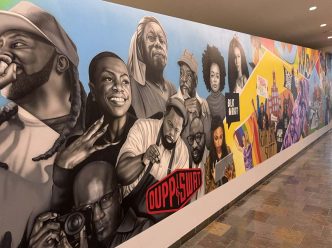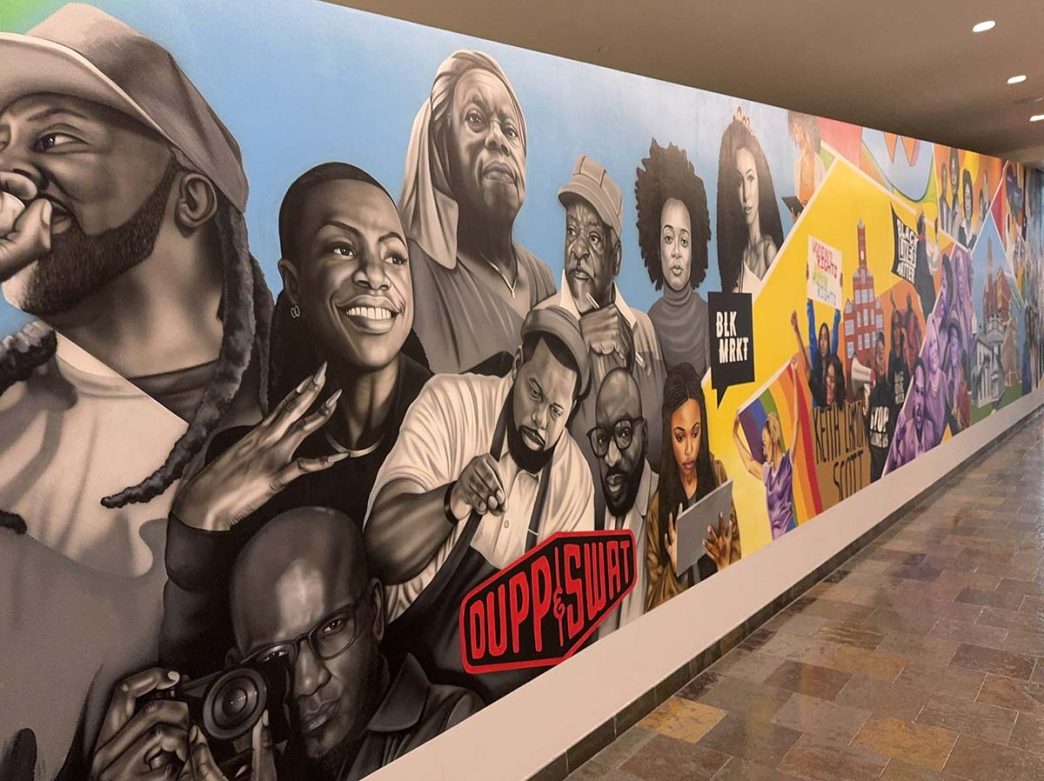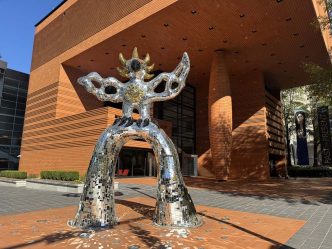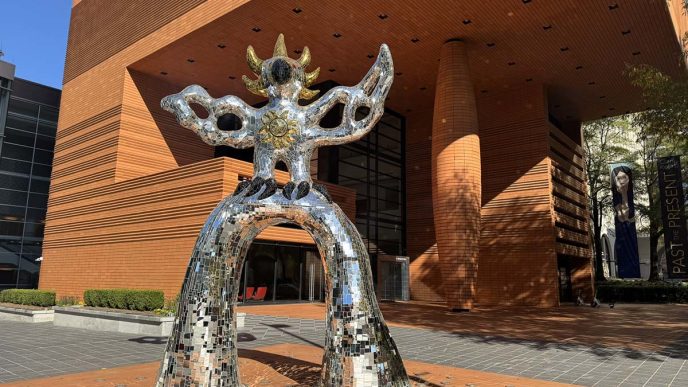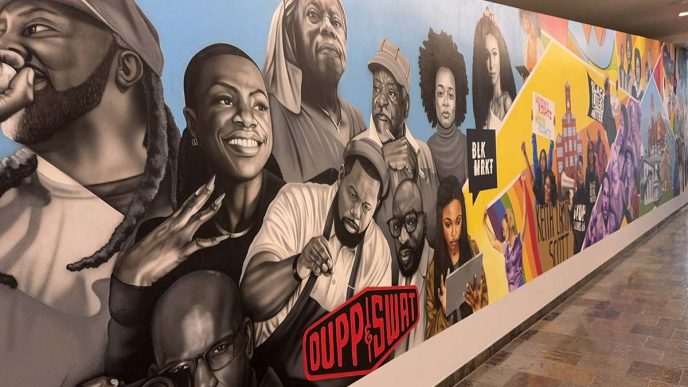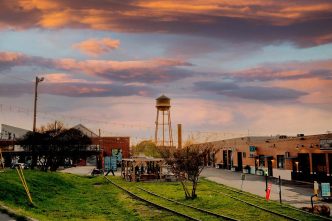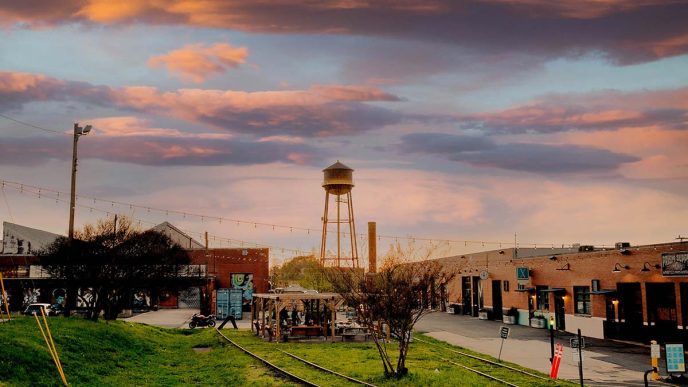Charlotte’s public art scene is experiencing a remarkable transformation, with several significant installations marking the city’s commitment to cultural enrichment and artistic innovation. Recent developments and longstanding pieces are creating a vibrant tapestry of public art across the Queen City.
1. Iconic Installations Mark Milestones
The city’s commitment to public art is exemplified by “Il Grande Disco,” which celebrates its 50th anniversary this month at Bank of America Plaza. Created by Italian artist Arnaldo Pomodoro, this 15-foot diameter bronze disc sculpture has become a defining feature of Charlotte’s uptown landscape. Originally designed to rotate with human touch, the sculpture now stands as a stationary monument to the city’s artistic heritage.
2. Contemporary Additions Transform Urban Spaces
Recent installations continue to enhance Charlotte’s public spaces. The “OF EARTH AND SKY” installation, part of the 2024 Charlotte International Arts Festival, represents the city’s embrace of contemporary public art. This large-scale installation features poetry submissions from local writers, focusing on the theme of space, demonstrating the intersection of literary and visual arts in public spaces.
3. Artist Backgrounds and Inspirations
The artists behind Charlotte’s public sculptures bring diverse perspectives and experiences. Ed Carpenter, known for his large-scale public sculptures incorporating glass, studied at prestigious institutions including the Rhode Island School of Design. His work often demonstrates technical innovation, particularly in the use of cold-bent tempered glass and programmed lighting elements.
4. Cultural Significance and Community Impact
Public art in Charlotte serves as more than mere decoration; it actively shapes community identity and promotes cultural understanding. These installations reflect the community’s values and create an elevated sense of awareness for both residents and visitors. The presence of public art has been shown to generate economic benefits, with increased foot traffic benefiting surrounding businesses.
5. Funding and Support Mechanisms
Charlotte’s public art initiatives benefit from a robust funding structure combining public and private resources. The city has increased its annual investment in arts and culture to $6 million per year. Foundation For The Carolinas led a successful fundraising campaign, ultimately raising $23 million from private-sector donors for the Infusion Fund.
6. Community Response and Engagement
Public response to Charlotte’s art installations has been largely positive, with many pieces becoming popular gathering spots and photo opportunities. The installations have helped create a sense of place and community identity, with residents and visitors alike engaging with the artwork.
7. Economic and Cultural Benefits
The impact of public art extends beyond aesthetics. Research indicates that public art installations can lead to improved public safety and increased economic activity in surrounding areas. Studies have shown that such installations can decrease accident rates and improve overall neighborhood safety.
8. Future Developments and Vision
Charlotte’s commitment to public art continues to evolve, with new initiatives focusing on accessibility and community engagement. The city is developing comprehensive policies and strategies to stabilize the arts and cultural sector while incentivizing growth opportunities for artists and arts organizations.
9. Educational and Social Impact
Public art serves as an important educational tool in Charlotte, offering opportunities for learning and engagement across generations. These installations provide hands-on learning experiences that enhance appreciation for the arts while fostering intergenerational connections within the community.
10. Environmental and Sustainable Practices
Many of Charlotte’s public art projects incorporate themes of environmental sustainability. Artists increasingly use eco-friendly materials and address environmental issues through their work, inspiring community members to consider their environmental impact.
11. Accessibility and Inclusion
Charlotte’s public art program emphasizes accessibility and inclusion, with installations strategically placed throughout the city to ensure broad public access. This approach helps create more equitable access to cultural resources across different neighborhoods and communities.
12. Long-term Vision and Sustainability
The city’s long-term vision for public art focuses on creating sustainable funding mechanisms and maximizing economic impact. This approach ensures the continued growth and development of Charlotte’s public art landscape while maintaining its cultural significance for future generations.
References:
– An uptown art installation hits the half-century mark (2024-10-07)
– Popular Public Art Installation OF EARTH AND SKY Returns to … (2024-06-04)
– Ed Carpenter (artist) – Wikipedia (2022-03-30)
– Four ways Public art Benefits the Community (2021-02-20)
– Arts and Culture – City of Charlotte (2024-01-01)
– How Public Art Can Improve Quality of Life and Advance Equity (2022-11-16)
– The Impact of Public Art on Community Identity (2024-05-29)
